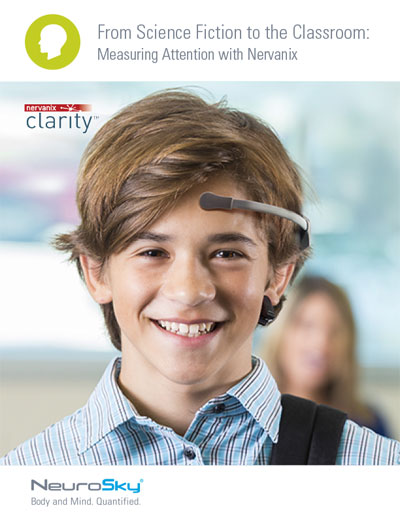EEG (electroencephalogram) technology offers incredible insight on the human brain. While this technology is complex, it’s important to understand just how it works. In this post, we’re going to shed some light on what exactly EEG technology is and how it works. Along the way, we’ll also introduce a few important terms to remember. In the end, we hope to provide you with an informative, easy to understand introduction to this impressive technology.
What is an EEG?
An EEG is, as defined by the Mayo Clinic, “A test that detects electrical activity in your brain using small, flat metal discs (electrodes) attached to your scalp.” Your brain cells, also known as neurons, communicate via electrical impulses and are active all the time, managing how you think and interact with the world, even when you’re asleep. Essentially, what we call “thought” is in fact an ever changing concert of electrical impulses. The average human brain has about 100 billion neurons, and an EEG test can track changes in neuron activity that may be useful in diagnosing brain disorders.
Capturing Raw Data
When an electrode captures neuron activity, it also captures the electrical activity taking place in its proximity. This is what’s known as raw EEG data. Raw EEG data is a complex wave form of not simply brainwave activity, but the electrical activity of nearby muscles, electrode motion interference and what is called “ambient noise” (caused by electrical supplies and appliances in the room). These noise sources are called artifacts.
Understanding Raw EEG Wave Forms
An easy way to understand raw EEG wave forms is to think of the following analogy:
Suppose I drop a pebble (neuron) into the middle of a still pond (brain surface). That action creates a pure wave (brainwave). Meanwhile, as my official wave collector, you are eagerly waiting for that wave to arrive to you on the shore so you can measure it (electrode). On its way, your wave encounters a few disturbances such as a floating log, swimming fish, and a motor boat (artifacts). These encounters disrupt and transform the wave such that, by the time it arrives, it’s no longer in its original shape.
Because raw EEG wave forms can be dramatically changed by artifacts, they need to be filtered. The result of this process is a filtered EEG—an EEG with all artifacts and extraneous information removed.
EEG Band Frequencies
An EEG has different “bands”, defined by the frequency of the waves; delta (slow) waves are less than 4 Hz; theta bands are 4-8 Hz; alpha bands range from 8 to 12 Hz; beta bands are anywhere from about 14-30 Hz, while gamma bands range from 30-80 Hz. Each of these bands are associated with different states of mental activity.
If we return to our pebble example for a moment, assume that instead of one pebble, many different-sized pebbles (multiple neurons) are dropped at random times into the pond, creating a multitude of overlapping waves. Thus, the wave you see at the shore (electrode) is made up of a composition of many other waves having different heights (amplitudes) and speeds (frequencies), all sort of running into each other. Your job, as the wave collector, is to separate out and classify these individual waves (band frequencies).
A Drop in the Ocean (or a Pond)
EEG technology is incredibly complex, and we don’t expect you to become an expert overnight. With the information provided above, we hope you have a better understanding of how EEG tests work, as well as information on why they are so important.



